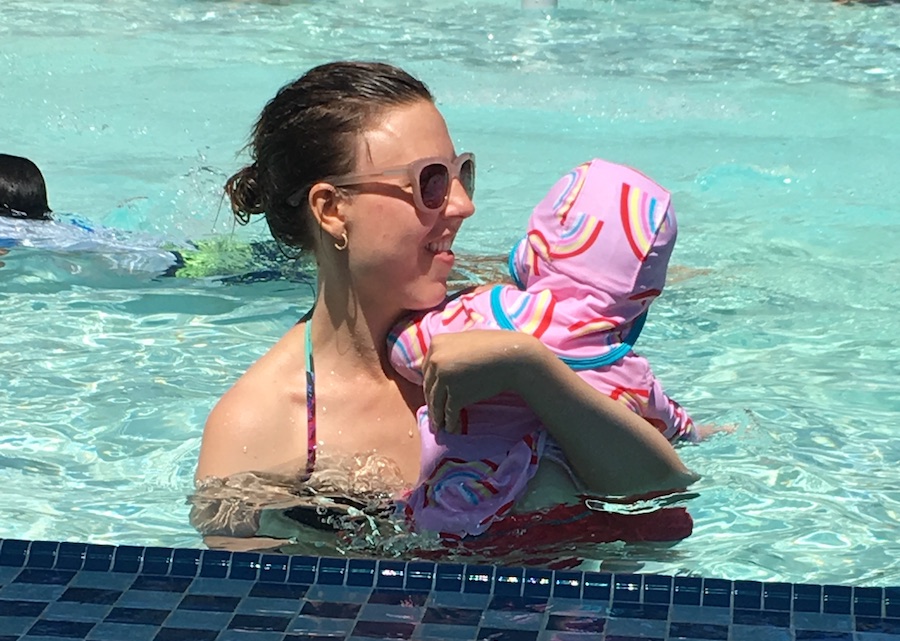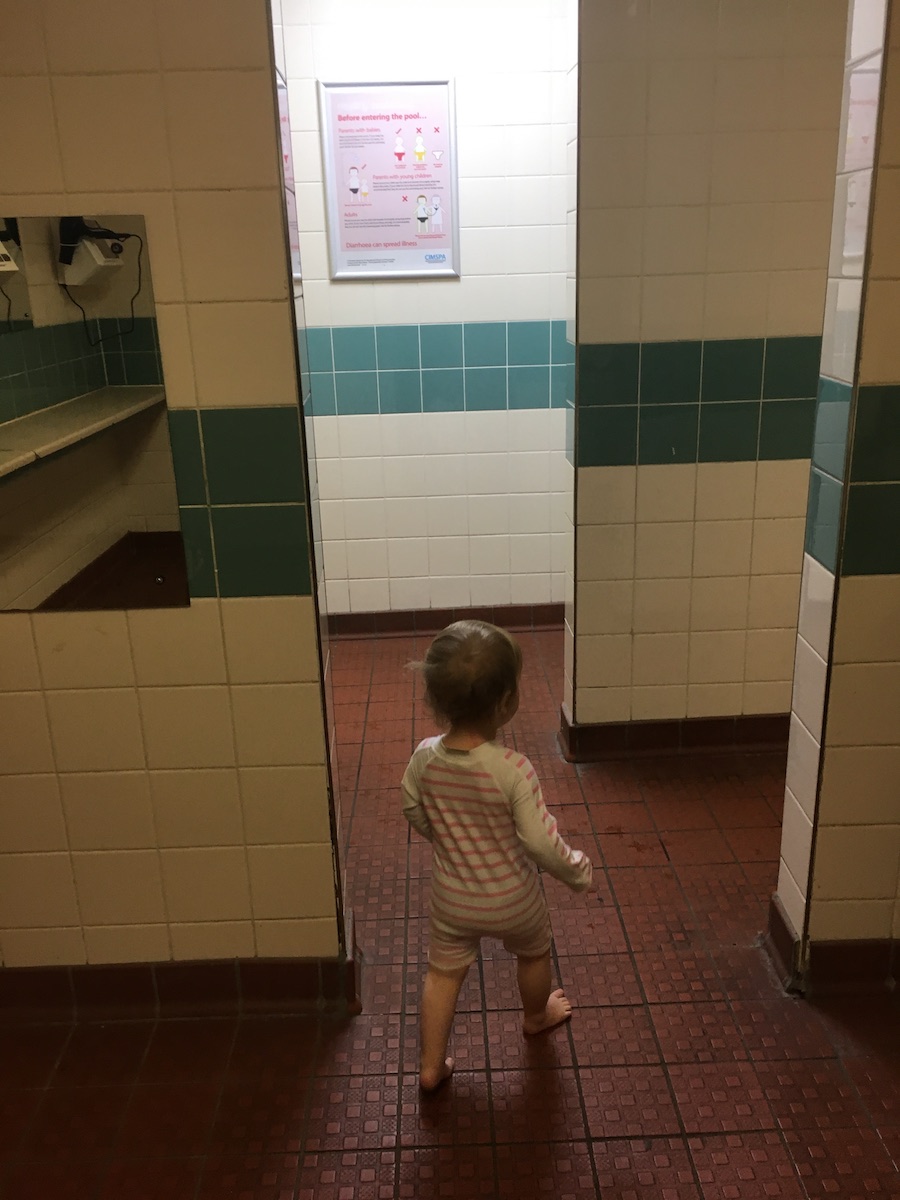Taking your baby or toddler swimming is great fun, whether you’re visiting your local pool or taking a dip in a hotel pool on holiday. Your little one might be nervous of the water at first – clinging onto you like a baby monkey and objecting every time her face gets wet – but it won’t be long before she’s merrily splashing and demanding to be thrown up in the air.
Some of the information in this post will be applicable to swimming in the sea but my main focus here is swimming pools (I cover beach visits more fully elsewhere on the blog). I found my first few swimming pool visits with the baby girl quite stressful – while the actual swimming part was lovely, the logistics of getting changed, dealing with the pushchair, showering with a baby, etc, were surprisingly challenging. Now I’ve got the hang of it all, I wanted to share what I’ve learnt in the hope that when you start taking your little one swimming, it all goes smoothly from the very start.
Before I begin, a quick note about when to take your baby swimming for the first time. While lots of pools advertise swimming lessons for babies from a few weeks old, it’s advisable to wait until your baby is around six-months-old before taking her swimming in chlorinated water. Young babies have extremely sensitive skin which is easily irritated by the chlorine and other chemicals in pools, and there is some suggestion that immature lungs can be damaged by breathing the chlorine-rich air in badly ventilated indoor swimming pools.
Choosing a pool

Most large public swimming pools in the UK will have a training or toddler pool with warmer water than the main pool, but it’s worth checking in advance. If you end up in a pool where the water temperature is less than around 26°C your swim will be very short indeed, which hardly seems worth the effort.
Outdoor pools at hotels and resorts are very often unheated, so take a small inflatable paddling pool with you that you can fill from the pool or shower and leave to warm up in the sun.
Essential kit
Whatever the temperature, it makes sense for your little one to wear a wetsuit. You’ll be moving around in the water, but your baby probably won’t be and she’ll get cold soon. A wetsuit will buy you time, though bear in mind that even in a warm pool, wearing a wetsuit, 20 minutes is about the maximum time you can expect to spend in the water. A full body wetsuit is also useful in terms of protecting your baby’s skin from the sun if you’re swimming outside.
Swim nappies are required for public pools. You can choose between disposable and washable. Washables are better for the environment and make sense financially if you plan to take your little one swimming a lot. A washable swim nappy fits tightly around your baby’s legs and is worn with a washable cotton liner and flushable paper liner that catch the poo. Disposable swim nappies are more widely available, including at a lot of public pools. If your baby will be in and out of the water a lot over the course of a day – in the pool at a resort, for example – disposables are easier, though once you get the hang of travelling with a couple of spare cotton and paper liners, washables work well too.
I also usually bring a ball or toy watering can to play with in the water, and a poncho towel for warming the baby girl up as fast as possible after showering. Plentiful snacks work as a good distraction for the few minutes when you’re getting dressed after your swim.
Pre-swim

Scope out the whole changing area when you arrive, before you get your baby out of her pushchair. You’re looking for somewhere spacious and close to the baby change table, lockers and showers. If there’s nowhere close to all three, the changing table should be your priority as you’ll need somewhere safe to put your baby while you get ready.
Get yourself ready first, as you want to leave your baby in her nappy until the very last minute – you don’t want her pooing in her swim nappy before you even get in the water. Be as organised as possible when it comes to putting your clothes in the locker so you can get dressed again quickly after you’ve been swimming; same with your baby’s clothes. Your baby will most likely be knackered, cold and hungry by the time you get out the water and have finished showering, so you want the process of getting out of there to be as quick and efficient as possible.
Poolside
Take a small washbag with whatever you need for the shower with you to the poolside, along with a towel. This saves you having to return to the locker before showering.
Post-swim

If you’re by yourself with a small baby, the most you’ll realistically be able to do in the shower is rinse off the chlorine. You can then shower properly and give your baby a bath when you get home. Remember to moisturise as the chlorine will dry her skin.
Some pools have baby-friendly changing areas with changing tables or wall-mounted high chairs that can go in the shower, giving you the opportunity to shower properly. Or if your baby can sit or stand by herself, you can put her on the floor at your feet, assuming she’s okay with getting water on her face. As with most things baby-related, it’s nerve-wracking the first time you do it, but fine thereafter.
Don’t worry about getting dry yourself until your baby is dry and warm (ah, the selflessness of parenthood). Once you’re dry, get your baby dressed, then distract her with a bottle or snack of some kind while you get dressed. If you’re breastfeeding, factor a post-swim feed into your timings.

